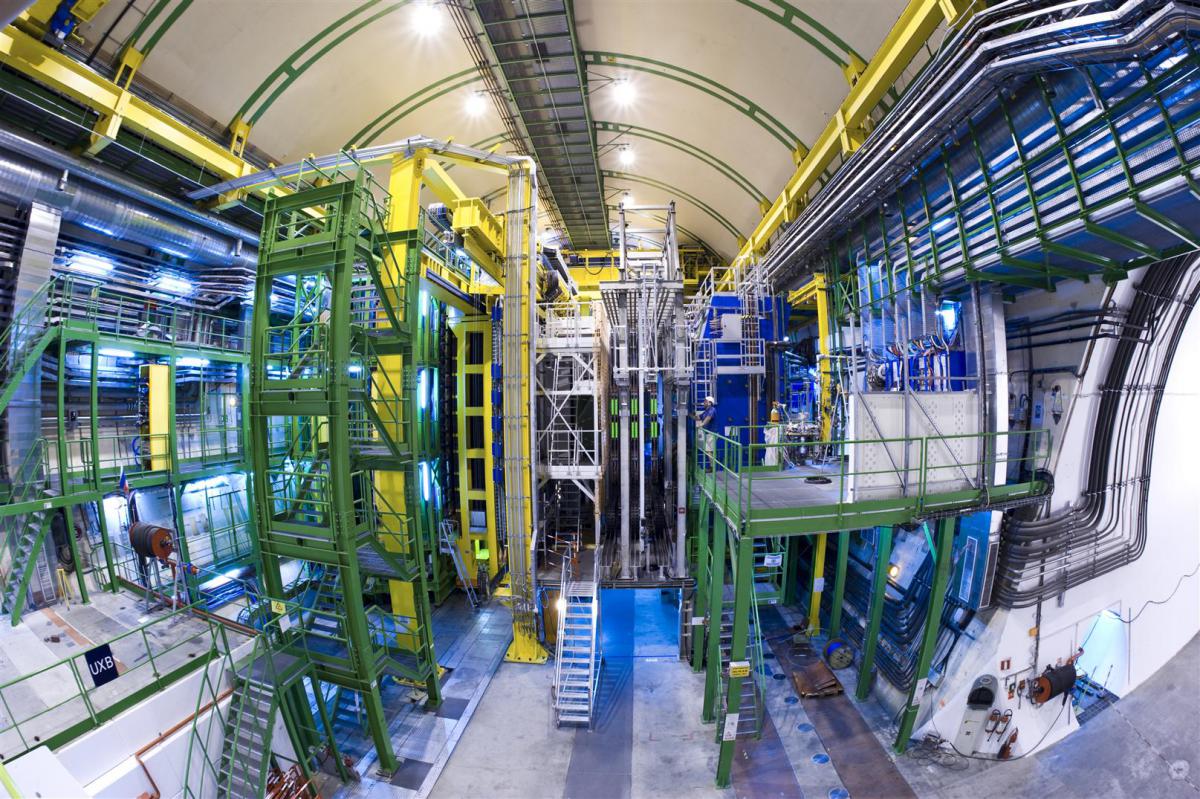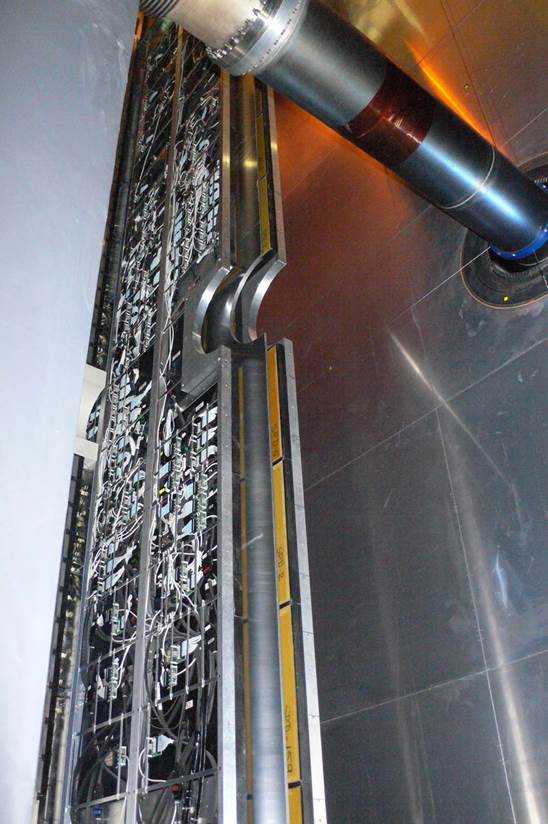SPD electronics design, test, and installation for the LHCb
LHCb is one of the four main detectors at the LHC (Large Hadron Collider) accelerator at CERN. The group has been responsible for the design, test and installation of the readout electronics for one of its sub-detectors with over 6.000 readout channels running at 40 MHz. Due to these requirements, an ASIC was necessary to integrate analog and digital functionalities, minimizing the power consumption and the noise, and to ensure the correct operation in a radiation environment with integrated doses up to 30 kRad.
The SPD system is used as an important component of the LHCb trigger and, together with the calorimeters, to help distinguishing electrons from photons. When a charged particle traverses one of the 6016 SPD cells, a light pulse is generated, collected and transmitted through optical fibers to a multi-channel photomultiplier tube, which generates a charge pulse. This pulse is integrated and compared to a reference threshold in the ASICs at the Very Front End boards, whose output is sent through 20-30 m long cable to the Front-End electronics that handles the data and trigger signals.
The participation in the SPD electronics design, test, and installation:
- Design, prototyping, and test of the electronics: ASIC and electronics boards
- Test Beam: check of the design using real particles at CERN installations.
- Radiation validation performed in GANIL.
- Hamamatsu R7600-03-M64MOD multi-channel photomultiplier tubes (PMT) automated test bench for channel-to-channel uniformity, linearity, and gain measurements.
-
Electronics production:
- ASIC
- VFE board
- Power Regulators board
- Electronics burn-in at APPLUS
-
Electronics massive test with dedicated test-benches:
- ASIC
- VFE board
- Power Regulator board
- Fast data transceiver with compensated cables
- Full system
- Installation at CERN LHCb cavern
- Commissioning of the SPD



